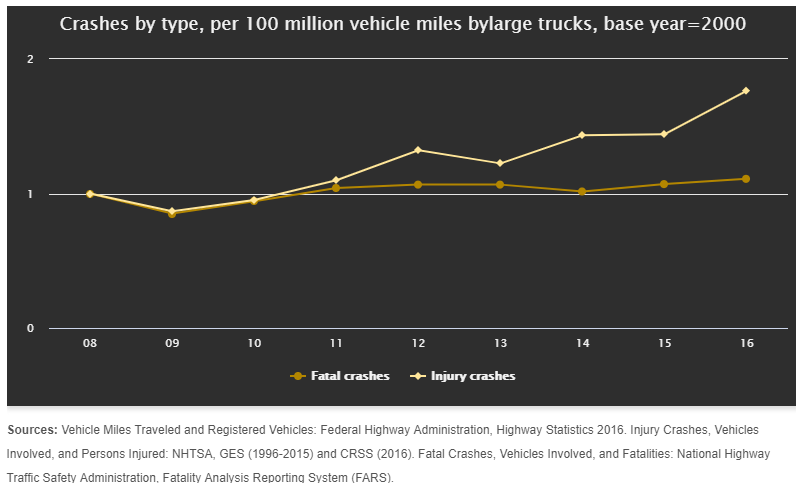In our previous ATRI initiatives blog post, we discussed the ROI of truck safety technologies, specifically video safety. In this week’s post, we examine the impact of “nuclear” verdicts on trucking.
First, what is a “nuclear verdict”? It’s a verdict in excess of $10 million. Between 2012-2015, there have been 12 verdicts totaling $900 million. One verdict was for $281 million.1 Unfortunately, the majority of verdicts go against the commercial transportation industry.
While there has been a slight uptick in the number of fatal crashes involving large trucks and buses in recent years, the number has hovered around 4,000 annually since 1975. Meanwhile the number of registered large trucks and buses on US highways has increased from 5.8 to 12.5 million over the same time period. A comparison of crashes of large trucks on the road indicates a relatively larger uptick in injury versus fatal crashes.2

But, it doesn’t have to be this way. The impact of new technologies, including sensors, cameras and autonomous technology are providing transportation companies with the opportunity to control their fate if they get involved in a legal battle. Technology – specifically cameras – provides an accurate snapshot of what actually happened during a collision and is a vital resource when it comes to settling claims.
When litigation is involved, many fleets use video to reduce the amount of time (and money) required to understand the legal situation and get to the truth. No other technology allows you to see exactly what happened, before, during and after the impact of a collision. No other technology readily exonerates drivers when not at fault.
It seems that insurance companies may be agreeing. “I think new technologies will ultimately pay off if you look at them from a casualty underwriting perspective because you’ll be able to get a snapshot, or at least some data insight, into every occurrence on the roads,” states Mike Hudzik, managing director and head of casualty underwriting in the U.S. and Canada for Swiss Re. “If you have access to all the elements behind a claim, that should hopefully result in more reliable outcomes for transportation clients, especially when disputes are taken to the plaintiffs’ bar.” Hudgzig adds, “Perhaps what you’ll see then is some of these nuclear verdicts being chopped down to what their real value is. That’s kind of a dream of mine.” 3
Learn how video safety can reduce collisions, support exonerations and lower costs across your fleet. With safer fleets, nuclear verdicts will no longer be relevant in the transportation industry.